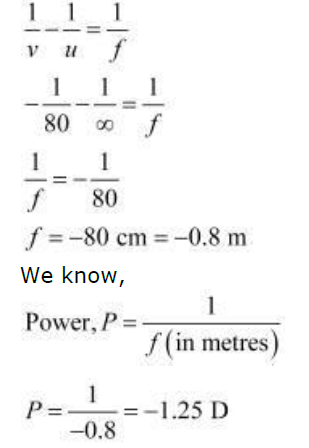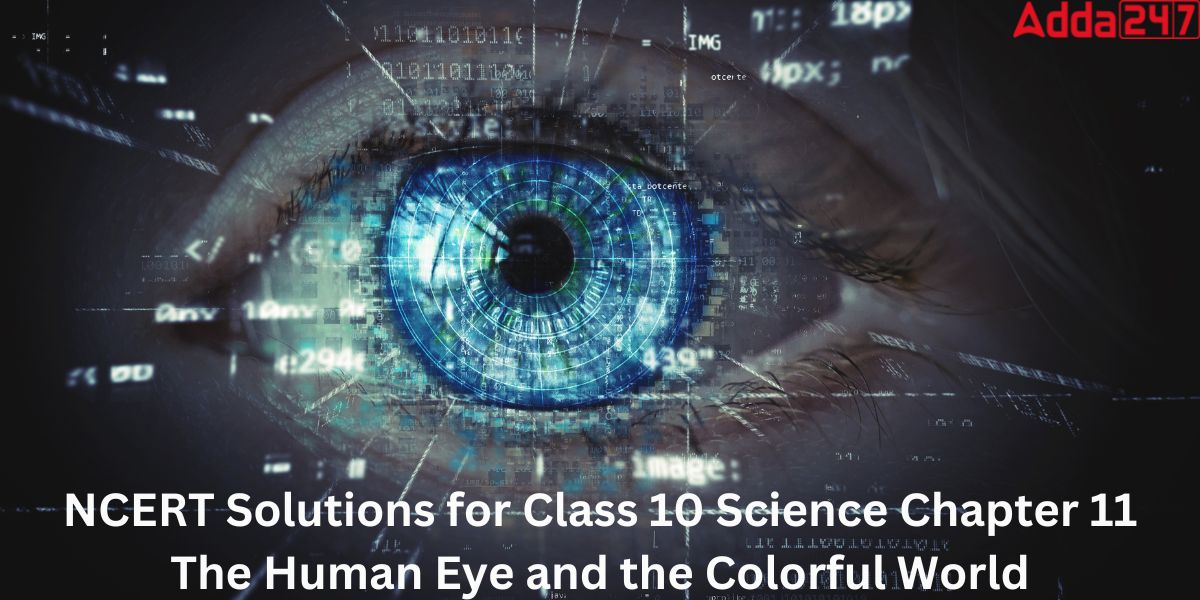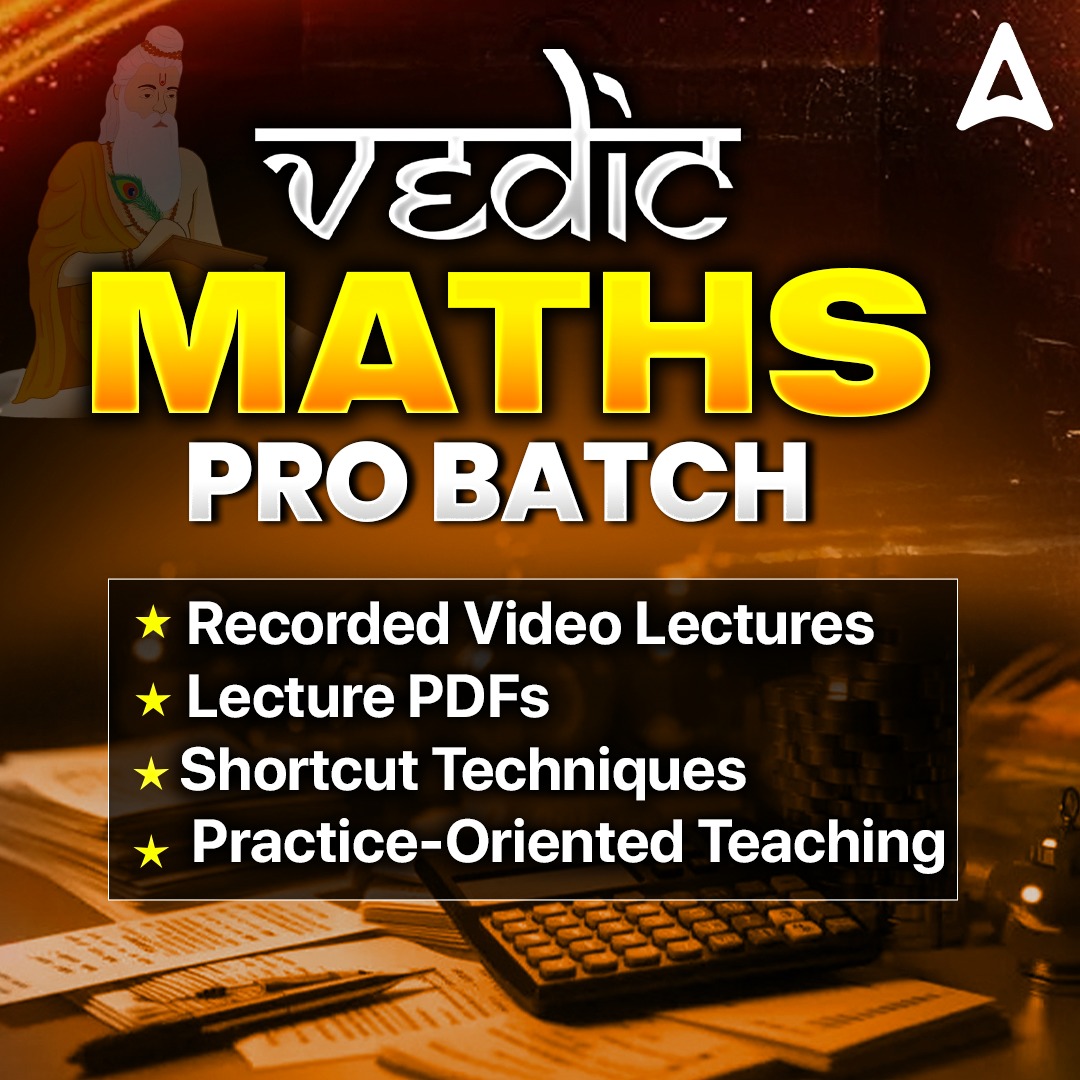NCERT Solutions for Class 10 Science Chapter 11- The Human Eye and the Colourful World: Introduction
NCERT Solutions Class 10 Science Chapter 11 The Human Eye and the Colourful World is given in the article.NCERT Solutions Class 10 is the best resource for obtaining a good score in the class 10 board Examination. Your preparation for the CBSE examinations will be aided by the NCERT Solutions for Class 10 Science Chapter 11 The Human Eye and the Colourful World.Here are Adda247 Expert faculty team prepared NCERT Solutions Class 10 Science Chapter 11 The Human Eye and the Colourful World along with in-text questions and exercises of that chapter for a better grasp of the topics. These solutions will help you understand the concepts covered in the chapter completely. So that students can pass their board exams with good scores. Keep learning with Adda247.
NCERT Solutions for Class 10 Science Chapter 11- The Human Eye and the Colorful World Pdf
NCERT Solutions for Class 10 Science Chapter 11 The Human Eye and the Colourful World is given in pdf format so that students can easily download it for future use. Click here to download
NCERT Solutions for Class 10 Science Chapter 11_The Human Eye and the Colourful World
NCERT Solutions for Class 10 Science Chapter 11- The Human Eye and the Colorful World: At a glance
Let’s take a quick look at the topics and subtopics covered in chapter 11 The Human Eye and the Colourful World before solving the Intext questions and exercises.
- The Human Eye And The Colourful World
- The Human Eye
- Defects Of Vision And Their Correction
- Refraction Of Light Through A Prism
- Dispersion Of White Light By A Glass Prism
- Atmospheric Refraction
- Scattering Of Light
NCERT Solutions for Class 10 Science Chapter 11- The Human Eye and the Colorful World: Video Explanation
NCERT Solutions for Class 10 Science Chapter 11- The Human Eye and the Colourful World: Questions and Answers
1. What is meant by the power of accommodation of the eye?
The ability of an eye to clearly concentrate rays from both close and far objects and create a picture on the retina by adjusting its focal length is known as accommodation. But there is a minimum distance below which the eye lens’ focal length cannot be reduced.
2. A person with a myopic eye cannot see objects beyond 1.2 m distinctly. What should be the type of corrective lens used to restore proper vision?
The person should use a concave lens with a focal length of 1.2 m (negative power) to treat myopia in order to recover vision.
3. What are the far point and near the point of the human eye with normal vision?
The nearest distance an object may be viewed clearly without putting any strain on the eye is referred to as the near point of the eye. The average human eye can see at a distance of 25 cm.
The maximum distance that the eye can view objects clearly without feeling any strain is referred to as the far point of the eye. The natural human eye’s farthest point is an infinity away.
4. A student has difficulty reading the blackboard while sitting in the last row. What could be the defect the child is suffering from? How can it be corrected?
A student in the last row finds it challenging to see the chalkboard. It denotes that he is unable to clearly notice items in the distance. The student has myopia, sometimes known as short-sightedness.
Concave or diverging lenses of the proper power can be used to treat myopia.
NCERT Solutions for Class 10 Science Chapter 11: Exercises
1. The human eye can focus on objects at different distances by adjusting the focal length of the eye lens. This is due to
(a) presbyopia.
(b) accommodation.
(c) near-sightedness.
(d) far-sightedness.
Answer: (b) accommodation. Due to the accommodation, the human eye can focus on objects at different distances by adjusting the focal length of the eye lens.
2. The human eye forms the image of an object at its (a) cornea. (b) iris. (c) pupil. (d) retina.
Answer: (d) retina, The layer of nerve cells that lines the back wall of the eye is called the retina. This layer detects light and communicates with the brain to allow vision.
3. The least distance of distinct vision for a young adult with normal vision is about
(a) 25 m. (b) 2.5 cm. (c) 25 cm. (d) 2.5 m.
Answer: (c) 25 cm
For a young adult with normal eyesight, 25 cm is the shortest distance at which they can see clearly.
4. The change in focal length of an eye lens is caused by the action of the
(a) pupil. (b) retina. (c) ciliary muscles. (d) iris.
Answer:(c) ciliary muscles.
The change in curvature of the eye lens alters the focal length of the eyes. Therefore, the ciliary muscles’ movement causes the focal length of an eye lens to shift.
5. A person needs a lens of power –5.5 dioptres for correcting his distant vision. For
correcting his near vision he needs a lens of power +1.5 dioptre. What is the focal
length of the lens required for correcting (i) distant vision, and (ii) near vision?
Answer:
(i) Power of the lens’s long-distance viewing aspect, P1 = -5.5 D
∴ Focal length , f1 = 1p1 = 1−5.5 m = -0.182 m = -18.2 cm
(ii) For near vision,
The lens’s power used to correct near vision is +1.5 D.
The required lens’s focal length (f)= 1/P
f = 1/1.5 = +0.667 m
The lens’s focal length to correct near vision is 0.667 m.
6. The far point of a myopic person is 80 cm in front of the eye. What is the nature and
power of the lens required to correct the problem?
Answer: The person has myopia, which is an eye condition. In this deficiency, the retina is not involved in the formation of the object’s image. Therefore, a concave lens is employed to fix this visual flaw.
Distance of Object (u) = infinity = ∞
Image distance (v) = – 80 cm
Focal length = f

So, The person should use a concave lens of power – 1.25 D
7. Make a diagram to show how hypermetropia is corrected. The near point of a hypermetropic eye is 1 m. What is the power of the lens required to correct this defect? Assume that the near point of the normal eye is 25 cm.
Answer: A person with hypermetropia can see distinct items clearly, but he will have trouble seeing adjacent objects properly. This occurs as a result of the eye lens’s ability to focus the incoming diverging rays beyond the retina. A convex lens is used to correct this. As shown in the following figure,

If the picture of the object is created at the person’s near point, which is given as 1 m, then the object will be clearly visible to him at a distance of 25 cm (the near point of the normal eye).
Object distance, u=-25 cm
Image distance, v = -1 m = – 100 m
focal length= f

8. Why is a normal eye not able to see clearly objects placed closer than 25 cm?
Answer: Due to the ciliary muscles of the eyes’ inability to contract beyond a certain point, a typical eye cannot perceive objects that are put closer than 25 cm clearly. The object can’t be focused on the retina at a distance of less than 25 cm, hence it appears blurry to the eye.
9. What happens to the image distance in the eye when we increase the distance of an object from the eye?
Answer: The image distance in the eye remains unchanged as the object is moved further away from the eye. Images of objects at various distances are formed by the eye lens of a normal eye on the same retina.
The change in the eye lens’s focal length balances the rise in object distance. The image is always created at the retina of the eye due to changes in the eye’s focal length. As the item is pushed farther from the eye, the eye lens gets thinner and its focus length gets longer.
10. Why do stars twinkle?
Answer: A star’s twinkling is caused by atmospheric refraction. After entering the earth’s atmosphere, starlight is constantly refracted until it reaches the planet’s surface. The stars are located very far from the planet. Because of the change in air density present at different heights of the atmosphere, light from stars that enter the earth’s atmosphere is refracted at different levels.
The amount of starlight that is refracted by the atmosphere as it approaches the earth’s surface affects how brilliant it looks. It’s obvious that it looks like nighttime and the stars are twinkling.
11. Explain why the planets do not twinkle.
Answer: The reason planets don’t twinkle is that they appear to be bigger than stars. Compared to stars, planets are significantly closer to the earth. Many light sources the size of points are gathered together to form planets. The different regions of these planets create either a brighter or a dimmer influence, but never both so that the sum of the two effects is zero.
12. Why does the Sun appear reddish early in the morning?
Answer: Before reaching our eyes at sunrise, the sun’s light rays travel a larger distance through the atmosphere. We know that only longer light wavelengths reach our eyes and that lesser light wavelengths are dispersed. Due to the fact that red has a long wavelength, all other coloured lights scatter except for the light that corresponds to the red colour. As a result, only the red-coloured light reaches the viewer. As a result, at sunrise and sunset, the sun appears reddish.
13. Why does the sky appear dark instead of blue to an astronaut?
Answer:The atmosphere gets thinner as an astronaut travels farther from the earth’s atmosphere. because there are no molecules. Sunlight cannot disperse. An astronaut sees the sky as dark instead of blue.
NCERT Solutions for Class 10 Science Chapter 11-FAQs
Q.Which chapter is the human eye and the Colourful world?
Q.What are the benefits of using the NCERT Solutions for Class 10 Science Chapter 11 The Human Eye and the Colourful World from Adda247?Ans. The benefits of using the NCERT Solutions for Class 10 Science Chapter 11 The Human Eye and the Colourful World from Adda247 are:
- Along with NCERT Solution, the student is getting video explanations also.
- PDF is also provided that can be downloaded and saved for future reference.












 AILET 2026 AIR 1: Check Full Toppers Lis...
AILET 2026 AIR 1: Check Full Toppers Lis...
 AILET Result 2026 OUT, How to Download S...
AILET Result 2026 OUT, How to Download S...
 CUET PG Crash Course 2026: Subject-Wise ...
CUET PG Crash Course 2026: Subject-Wise ...














